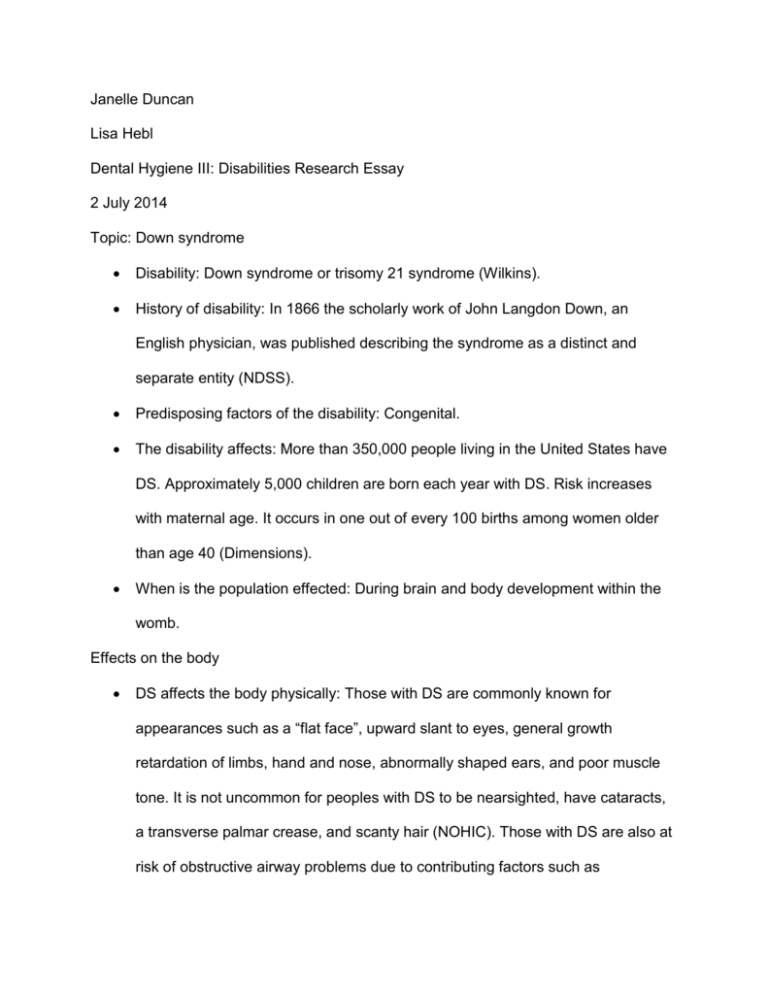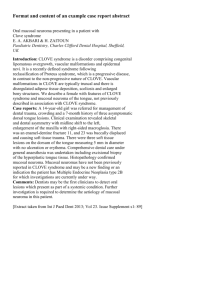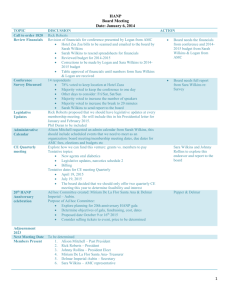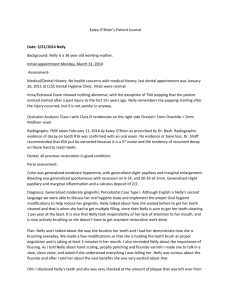File - Janelle R. Duncan
advertisement

Janelle Duncan Lisa Hebl Dental Hygiene III: Disabilities Research Essay 2 July 2014 Topic: Down syndrome Disability: Down syndrome or trisomy 21 syndrome (Wilkins). History of disability: In 1866 the scholarly work of John Langdon Down, an English physician, was published describing the syndrome as a distinct and separate entity (NDSS). Predisposing factors of the disability: Congenital. The disability affects: More than 350,000 people living in the United States have DS. Approximately 5,000 children are born each year with DS. Risk increases with maternal age. It occurs in one out of every 100 births among women older than age 40 (Dimensions). When is the population effected: During brain and body development within the womb. Effects on the body DS affects the body physically: Those with DS are commonly known for appearances such as a “flat face”, upward slant to eyes, general growth retardation of limbs, hand and nose, abnormally shaped ears, and poor muscle tone. It is not uncommon for peoples with DS to be nearsighted, have cataracts, a transverse palmar crease, and scanty hair (NOHIC). Those with DS are also at risk of obstructive airway problems due to contributing factors such as macroglossia, increased secretions, frequent respiratory infections, obesity, enlarged tonsils and adenoids (Wilkins). Medications to help disease or symptoms: Antibiotic premedication for many patients due to high incidence of mitral valve prolapse in DS population (Wilkins). Some patients benefit from the daily use of an antimicrobial agent such as chlorhexidine (NOHIC). Medications that adversely affect the body: No customary medications. Therapies such as physical, occupational and speech are encouraged. DS is a lifelong condition of symptoms ranging from mild to severe. The range of IQ levels among people with DS can be just below average. Language and motor development may be delayed or slow. Effects on the oral cavity Chronic mouth breathing is common due to small nasal airways. This can lead to xerostomia fissures of the tongue and lips (Wilkins). DS affects the oral cavity physically: It is associated with malocclusion, bruxism, conical-shaped tooth roots, and abnormal host response due to compromised immune system. Children and young adults with DS have also been known to have delayed eruption of primary and permanent teeth, missing permanent teeth, and small sized teeth with wider spaces between them. Periodontal disease is the most significant oral health problem in people with DS due to poor oral hygiene, malocclusion, bruxism, conical-shaped tooth roots, and abnormal host response because of their compromised immune system (NOHIC). Several oral conditions may contribute to why children and young adults who have DS syndrome have fewer caries than people without this developmental disability, such as; delayed eruption of primary and permanent teeth, missing permanent teeth, and small sized teeth with wider spaces between them (NOHIC). Also, the diets of many children with DS are closely supervised and this helps reduce cariogenic foods and beverages consumed. Medications effect on the oral cavity: may lead to xerostomia and/or gingival hyperplasia. Dental Treatment/appointment modifications Need for caretaker and additional education: Some people with DS can brush and floss independently, but many need help. Involve patients in hands-on demonstrations of brushing and flossing. Instruct caregivers about daily oral hygiene such as proper brushing and flossing techniques. Regularity is aspects such as positioning, location, and timing may also help. Tooth brush modifications: Power toothbrush may help simplify dental care. Dental aides: floss handle may help simplify dental care. Appointment modifications: Adjust chair position, moisten dental instruments, repeating hands-on OHI, and education of caregiver if one is present. Works Cited National Down Syndrome Society - The National Advocate for People with Down Syndrome Since 1979. (n.d.). National Down Syndrome Society - The National Advocate for People with Down Syndrome Since 1979. Retrieved June 30, 2014, from http://www.ndss.org Practical oral care for people with developmental disabilities ( ed.). (2009). Bethesda, Md.: U.S. Dept. of Health and Human Services, National Institutes of Health, National Institute of Dental and Craniofacial Research. Waldman, H., Bourg, P., Perlman, S. 2010. [Pamphlet]. How to serve those with special needs. Dimensions of Dental Hygiene, 8(10), 69-71. Wilkins, E. M. (2013). Clinical practice of the dental hygienist (11th ed.). Philadelphia: Wolters Kluwer Health/Lippincott Williams & Wilkins.








